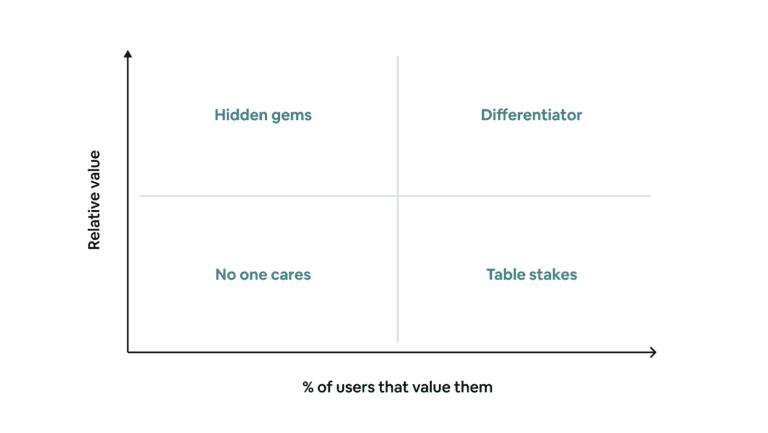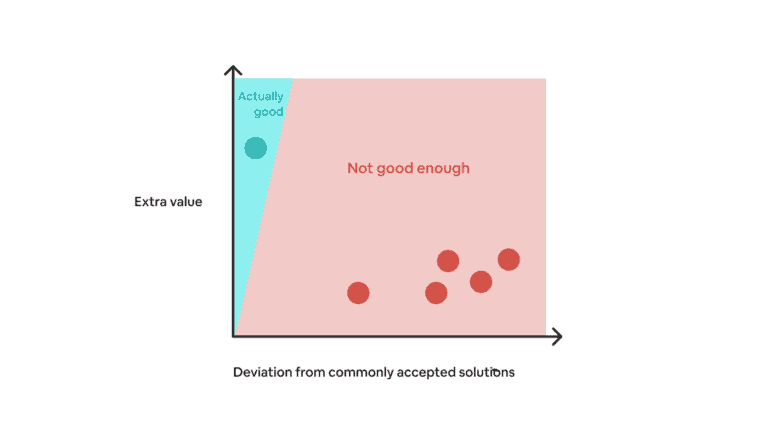Being a product manager is hard. You have to lead without authority, wear multiple hats, and take blames for (almost) everything. But you know what’s even harder? Being a product manager at a startup.
As someone who has recently wrapped up his first startup PM role, I‘ve certainly had my fair share of struggles. Today, I want to share three challenges that are unique to startup PMs and ways to deal with them.
My definition of a startup here = A company that has already gained some tractions, raised seed capital, and hired no more than 50 employees.
Everything is ugly and messy, embrace it

Challenge
If you google “how to build a great product,” you’ll most likely come across Scrum, Design Sprint, A/B testing, and all sorts of fancy practices. Guess what? You’d be lucky if any of these exists within your startup, even to the slightest degree.
In reality…
- Team members question the usefulness of a new exercise you want to run.
- Data are wrong because tracking is broken.
- You found a great tool to help you build better products in the long run, but you can’t prove its value in hard numbers to justify the cost.
- Only 5% of the items in your “sprint” get worked on because your engineers spend most of their time fixing unexpected bugs and randomly requested tasks from other teams.
- You know what your users need, but you are not sure whether those users are what your company needs to grow 100X.
As a product manager, it’s your job to introduce best practices to set your team up for scalable growth. The problem is — most groundworks you do at this stage, such as implementing new processes, won’t yield any direct result soon. At startups, especially the ones that have seen some signs of success, people can be skeptical of trying new things (yes, you heard me right) that do not show tangible impacts within a month because they cannot afford to lose momentum. Oftentimes, you’ll feel the lack of support and start to envy PMs at more established organizations as their world appears to be all sunshine and rainbows (which is not true).
Solution
You need to embrace the messiness and be scrappy. Acknowledge that things are far from perfect but never feel content with where things are. Make plans to improve one thing each week. Over time, people will start to see results and follow your lead. Once the trust is built, good things will come along naturally.
Communicate with the founders or CEO as much as possible
Challenge
No matter how large of a company it is, dealing with senior management will always be part of a PM’s job. However, the relationship between CEO (or founders) and PMs is especially vital to the success of a startup.
In the early stages of a company, the CEO is the one and only product manager. Most startups do not hire PMs unless there are strong reasons to do so. Even then, chances are that the CEO will still question whether a dedicated PM is a necessity to the team. As a startup PM, you have to remember that the CEO is the Chief Product Officer until someone takes over that role officially. It’s likely your CEO’s first time allowing someone else to make product decisions, so expect distrust and disagreement.

When it comes to decision making, some product leaders, such as Noah Weiss at Slack, believe PMs should not make any decisions. This is a utopian ideal that I can only agree with to a certain degree. In reality, a PM’s job is full of direct and indirect decisions, whether he or she realizes it or not. If a PM is not given any authority to make decisions, nothing will get done no matter how impeccable of a decision-making framework the PM has set up. However, since the product is often the most crucial aspect of a startup, sharing even the slightest decision-making authority with the CEO can introduce unintended tensions.
Solution
Communicate with the CEO as much as possible. In the first three to six months, ask a bunch of questions to understand the leadership’s vision and approach to problems. During this period, try acting like an extension of the CEO’s brain to establish mutual trust. Once you have developed enough knowledge about your users and market, start proposing product improvements based on your findings and create a decision-making process that’ll get your CEO involved.
There will be times when you don’t agree with your CEO’s opinions. When that happens, ask for elaboration in a non-confrontational way. If you see any flaws in the CEO’s logic (which there will be), politely point it out and have a constructive discussion. At the end of the day, it is not about “who” can build a better product but “how” to build a better product as a team.
Remember, the company needed a PM for a reason. Find out why and constantly demonstrate your value to remind the team why you are there.
Make the most out of being a ‘Jack of all trades’

Challenge
“Jack of all trades, master of none” perfectly describes a startup PM. Roughly 25–40% of a startup PM‘s job consists of non-product-related tasks. As much as I enjoyed helping out with different business functions, there were times when I asked myself, “Wait, I’ve only read a short tutorial for 10 minutes. Am I doing this correctly? Should I even be doing this?”
What’s worse is the fear that you are not progressing as a PM, or that you are not a “real” PM like the ones at Google or Facebook. Unless one of the founders has a PM background, you are unlikely going to have a mentor within the company to teach you the craft of product management.
Solution
First of all, you have to understand that having to wear multiple hats is a blessing in disguise — it allows you to shape the role to be whatever you like. While your ultimate goal is still helping the company grow, you will have far greater flexibility than PMs at large companies in terms of “how” to do it.
You should also seize the learning opportunities when working on tasks that fall outside of the conventional PM scope. A great PM needs to be comfortable picking up new skills without guidance since the role is always evolving. This is one of the main reasons why startup founders are considered to be great candidates for the PM role.
The unavailability of apprenticeship, on the other hand, is harder to overcome. I study product management mostly by participating in online communities such as Product Manager HQ and Mind the Product Slack. I’m also a big fan of product management-related content on Intercom’s blog, UserOnboard, and This is Product Management.
However, there is only so much you can learn by reading high-level concepts and case studies. The best way to master the art of product management is to work alongside experienced PMs, understand how they approach problems, and ask for advice in specific scenarios. My suggestion is to find mentors through local or online communities. Every mentor I’ve reached out to has been extremely helpful, and I try to help others whenever possible.
But it’s all but worth it
As scary as I may have made it sound, working as a startup PM is in fact an exceptionally rewarding experience. With the right approach, you can supercharge your PM skills in a short amount of time. I encourage every product manager to join a seed-stage startup at one point in his or her career!




